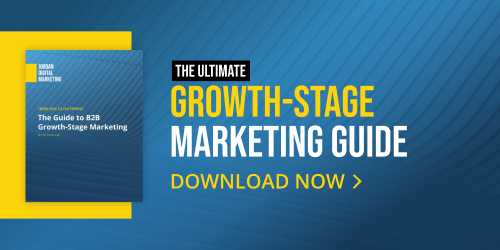Digital advertising requires a deft hand to stay on top of all initiatives across your media mix (this could include Google, LinkedIn, Meta, etc.). When you’re in the weeds, it can be easy to overlook account performance issues. Taking a step back and evaluating what’s working and what’s not working is a crucial part of keeping account performance from eroding over time.
In this blog post, we’ll explore why account analysis is crucial and the goals it aims to achieve. We’ll also introduce our formula for success along with other key considerations.

Why Is Account Analysis Important?
Good account analysis is the backbone of any successful digital marketing strategy. It provides valuable insights into the performance of your campaigns, helping you to understand what’s working and what needs improvement. This includes optimizing performance, improving cost efficiencies, increasing competitive advantages, and making better, data-driven decisions.
Analysis Goals
When conducting account analysis, you should always have clear goals in mind. These goals should guide your analysis efforts and ensure you’re focusing on what matters most. We suggest answering the following questions:
- What’s the most important goal to the business and is it being met?
- What is the account spending money on that is not working?
- What is the account spending money on that is working?
- What can be learned to drive future strategies?
The Showstopper Formula for Fabulous Analysis
A key element of effective account analysis is what we have dubbed to be the “Showstopper Formula” for strong analysis. This formula comprises four essential components:
- Data
- Insights
- Formatting
- Recommendations & Next Steps
Let’s take a closer look at each part of the formula.
Data Focus: Segmentation & Choosing the Right Metrics
The first step in good account analysis is ensuring you’re focusing on the right metrics that align with your goals. To do this, it’s essential that everyone understands the objectives and selects metrics that directly support these goals. This might include metrics like cost, impressions, clicks, conversions for each action (SQLs, opps, revenue, etc.), or the cost per conversation for each action.
You might also want to consider how you segment your data. Breaking down your data by segment like campaign, keyword, date, ad, or creative will allow you to pinpoint specific areas where improvements or adjustments are needed.
Insights: Tailor To Goals
The second key is to derive all insights based on goals outlined above. Focus on the data points that are important information to the team and ask yourself what critical information they need to know about the campaign’s performance in regard to those goals. Additionally, identify which data points directly support the recommendations and next steps you plan to propose.
Formatting: Executive-Ready Presentation
The third key is to make sure your analysis is ready for higher level stakeholders. This means presenting the data in a way that is easy to understand, using clear numbers and well-organized column headers in a user-friendly format and highlighting only the most important points. It’s important to avoid information overload.
Recommendations & Next Steps: Using the Data
Offering concrete guidance on how to improve performance is the final part of the formula. Based on the insights derived from the data and analysis, you’ll want to provide clear and actionable recommendations. What changes should be made to the account based on your findings? What are the next steps, and what is the timeline for executing on them?
Other Considerations
When using the formula above, you’ll also want to keep these six things in mind when analyzing your accounts.
- Data Accuracy & Integration: Make sure all data is accurate and in alignment with your goals.
- Analysis Cadence: Striking the right balance in analysis cadence is essential. Avoid waiting too long to analyze data, as this may result in missed optimization opportunities. Conversely, don’t analyze too frequently, which can lead to unnecessary data fatigue and keep you from seeing bigger-picture trends.
- Goal Alignment: Be sure everyone is focused on the same goals and tailor your insights and recommendations for efficiency and scale.
- Clear & Actionable Insights: There’s nothing worse than ambiguous analysis. All insights should be crystal-clear with a roadmap of exactly what to do next.
- Process Automation: Automating as much of this process as possible is the best way to allow the focus to be on analysis and action.
- Calculation of Ratio Metrics: In your analysis, always include the calculation of ratio metrics such as click-through rate (CTR), conversation rate, and cost per lead.
By consistently applying this formula and keeping these considerations in mind when analyzing accounts, you’ll be better equipped to optimize your campaigns and drive meaningful results. Looking for a team that lives and breathes this formula already? Contact us today for a free paid ads audit!
